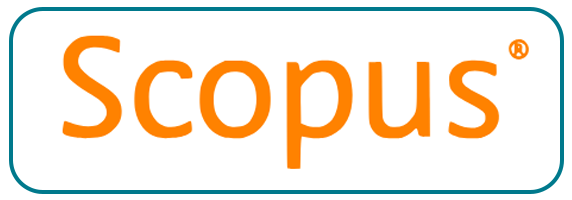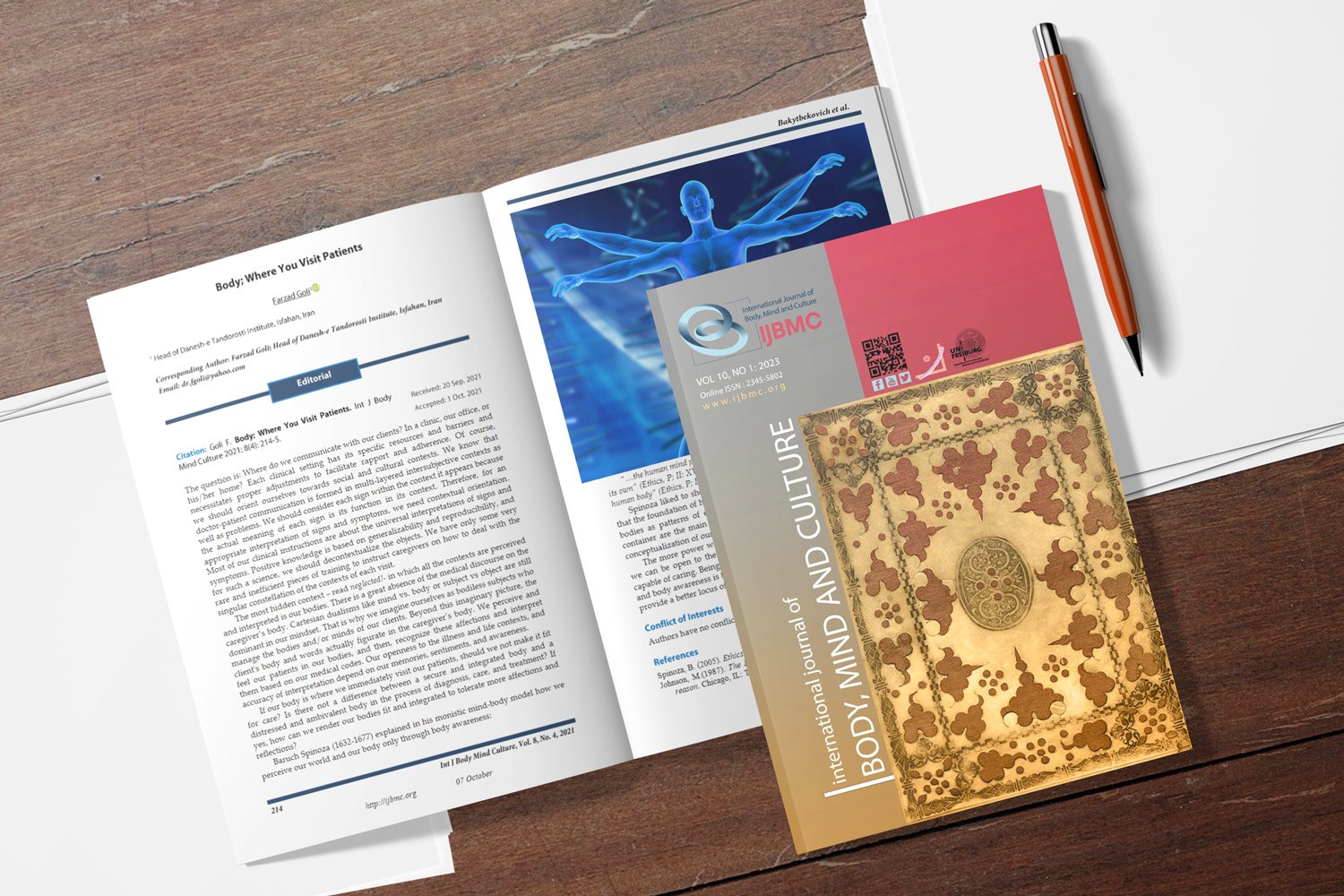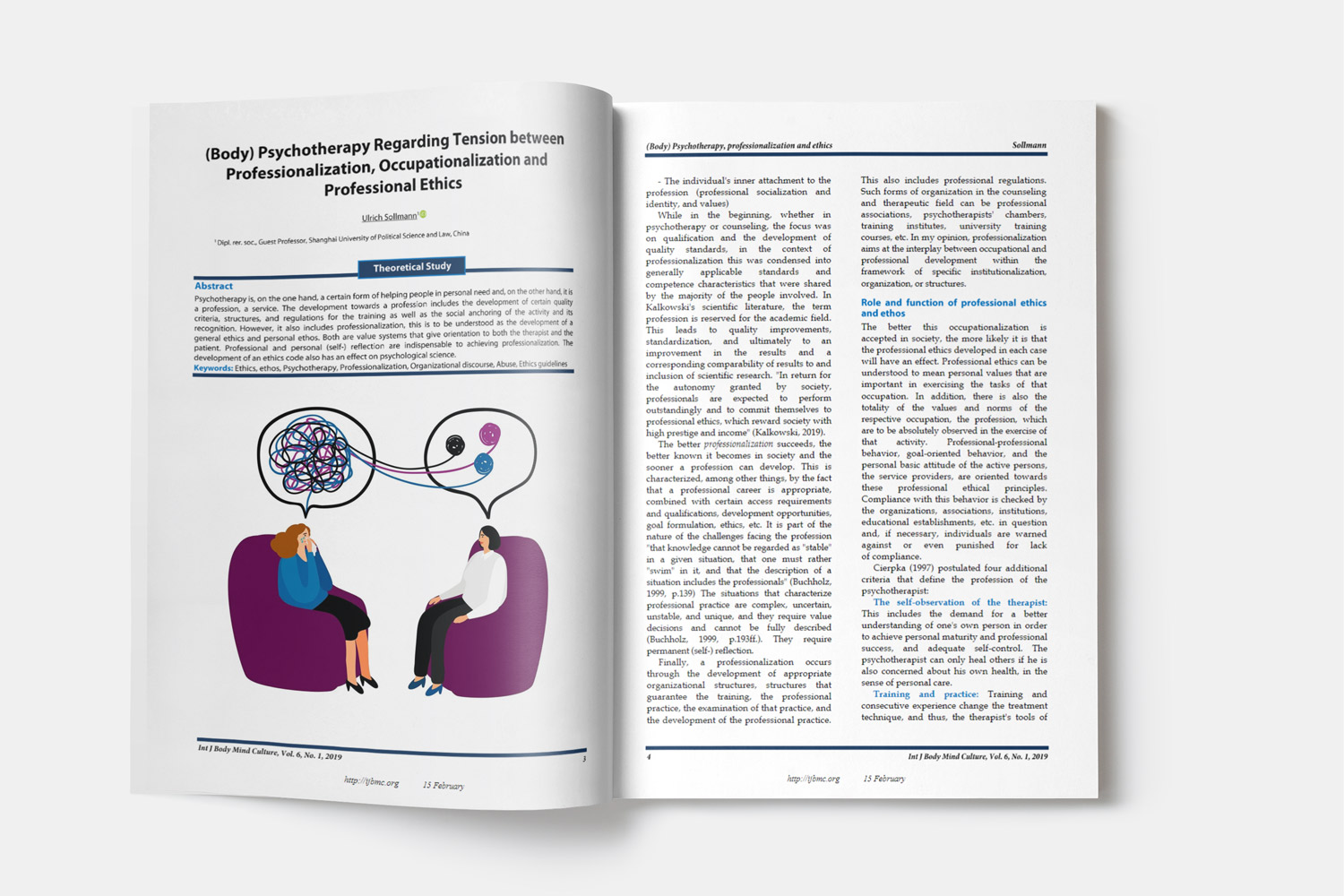Comparing the Effectiveness of Behavioral Therapy and Cognitive Behavioral Therapy on Anxiety Levels of Patients with Heart Attack
Effectiveness of BT and CBT on anxiety levels of patients with heart attack
Downloads
Background: Anxiety is one of the causes and consequences of a heart attack, and its therapy is critical in lowering the risk of recurrence and improving patients' quality of life. The current study aims to examine the effectiveness of behavioral therapy (BT) and cognitive behavioral therapy (CBT) on the anxiety levels of patients with heart attack.
Methods: In the current experimental study, the statistical population included 387 patients with heart attack who visited Al Budoor Hospital in Baghdad, Iraq, in 2022. A random sample of 150 individuals was selected via simple random sampling. Using a multiple-group pre-test-post-test design, two intervention groups and one control group were examined by the Beck Anxiety Inventory (BAI) (50 people in each group). To analyze the data obtained from the pre-test and post-test for each group, the analysis of covariance (ANCOVA) was used to examine the significance of the results between groups. The SPSS software was used for analyses, and the statistical significance level of the results was deemed to be 0.05.
Results: The one-way analysis of variance (ANOVA) test showed a significant difference between at least two groups (F = 14.90, P < 0.001). Furthermore, Tukey's post hoc test findings revealed that the post-test anxiety scores of both intervention groups were significantly different from the control group (P < 0.001). Moreover, the cognitive behavioral intervention group had lower mean anxiety scores than the behavioral intervention group, but this difference was not significant (P > 0.05).
Conclusion: The findings indicated that BT and CBT methods significantly reduced anxiety in patients with heart attack, with cognitive-behavioral methods being more effective.
Downloads
Afshar, H., Roohafza, H., Hassanzadeh-Keshteli, A., Sharbafchi, M. R., Feizi, A., & Adibi, P. (2015). Association of personality traits with psychological factors of depression, anxiety, and psychological distress: A community based study. Int J Body Mind Culture, 2(2), 105-114. doi: 10.22122/ijbmc.v2i2.32 [doi]
Albus, C., Herrmann-Lingen, C., Jensen, K., Hackbusch, M., Munch, N., Kuncewicz, C. et al. (2019). Additional effects of psychological interventions on subjective and objective outcomes compared with exercise-based cardiac rehabilitation alone in patients with cardiovascular disease: A systematic review and meta-analysis. Eur.J Prev Cardiol., 26(10), 1035-1049. doi:10.1177_2047487319832393 [pii];10.1177/2047487319832393 [doi]. Retrieved from PM:30857429
Alkhafaje, W. K., Kshain, W. H., Fadhi, A., Al-Mualm, M., & Fadhil, M. (2022). Listeria Infection as the Possible Cause of The Spontaneous Abortion in Fertile Age of Women. History of Medicine, 8(1), 1-6. doi: 10.17720/2409-5834.v8.1.2022.001 [doi].
Beck, A. T., & Steer, R. A. (1991). Relationship between the Beck Anxiety Inventory and the Hamilton Anxiety Rating Scale with anxious outpatients. Journal of Anxiety Disorders, 5, 213-223. doi:10.1016/0887-6185(91)90002-B [doi]
Beckie, T. M. (2006). A behavior change intervention for women in cardiac rehabilitation. J Cardiovasc.Nurs, 21(2), 146-153. doi:00005082-200603000-00013 [pii];10.1097/00005082-200603000-00013 [doi]. Retrieved from PM:16601534
Clarke, D. M., & Currie, K. C. (2009). Depression, anxiety and their relationship with chronic diseases: a review of the epidemiology, risk and treatment evidence. Med J Aust, 190(S7), S54-S60. doi:cla10974_fm [pii];10.5694/j.1326-5377.2009.tb02471.x [doi]. Retrieved from PM:19351294
Coorey, G., Peiris, D., Neubeck, L., & Redfern, J. (2020). A realist evaluation approach to explaining the role of context in the impact of a complex eHealth intervention for improving prevention of cardiovascular disease. BMC Health Serv.Res, 20(1), 764. doi:10.1186/s12913-020-05597-5 [pii];5597 [pii];10.1186/s12913-020-05597-5 [doi]. Retrieved from PM:32811480
Cully, J. A., & Teten, A.L. (2008). A therapist's guide to brief cognitive behavioral therapy. department of veterans affairs south central MIRECC, Houston.
Davis, R., Campbell, R., Hildon, Z., Hobbs, L., & Michie, S. (2015). Theories of behaviour and behaviour change across the social and behavioural sciences: a scoping review. Health Psychol Rev, 9(3), 323-344. doi:941722 [pii];10.1080/17437199.2014.941722 [doi]. Retrieved from PM:25104107
Dellafiore, F., Chung, M. L., Alvaro, R., Durante, A., Colaceci, S., Vellone, E. et al. (2019). The association between mutuality, anxiety, and depression in heart failure patient-caregiver dyads: an actor-partner interdependence model analysis. J Cardiovasc.Nurs, 34(6), 465-473. doi:10.1097/JCN.0000000000000599 [doi]. Retrieved from PM:31365444
Foxwell, R., Morley, C., & Frizelle, D. (2013). Illness perceptions, mood and quality of life: a systematic review of coronary heart disease patients. J Psychosom.Res, 75(3), 211-222. doi:S0022-3999(13)00193-1 [pii];10.1016/j.jpsychores.2013.05.003 [doi]. Retrieved from PM:23972409
Frizelle, D. J., Lewin, R. J., Kaye, G., Hargreaves, C., Hasney, K., Beaumont, N. et al. (2004). Cognitive-behavioural rehabilitation programme for patients with an implanted cardioverter defibrillator: a pilot study. Br.J Health Psychol, 9(Pt 3), 381-392. doi:10.1348/1359107041557039 [doi]. Retrieved from PM:15296684
Goldston, K., & Baillie, A. J. (2008). Depression and coronary heart disease: a review of the epidemiological evidence, explanatory mechanisms and management approaches. Clin Psychol Rev, 28(2), 288-306. doi:S0272-7358(07)00105-5 [pii];10.1016/j.cpr.2007.05.005 [doi]. Retrieved from PM:17601644
Havranek, E. P., Mujahid, M. S., Barr, D. A., Blair, I. V., Cohen, M. S., Cruz-Flores, S. et al. (2015). Social determinants of risk and outcomes for cardiovascular disease: a scientific statement from the american heart association. Circulation, 132(9), 873-898. doi:CIR.0000000000000228 [pii];10.1161/CIR.0000000000000228 [doi]. Retrieved from PM:26240271
Hegewald, J., Wegewitz, U. E., Euler, U., van Dijk, J. L., Adams, J., Fishta, A. et al. (2019). Interventions to support return to work for people with coronary heart disease. Cochrane.Database.Syst Rev, 3(3), CD010748. doi:CD010748.pub2 [pii];10.1002/14651858.CD010748.pub2 [doi]. Retrieved from PM:30869157
Hemingway, H., & Marmot, M. (1999). Evidence based cardiology: Psychosocial factors in the aetiology and prognosis of coronary heart disease. Systematic review of prospective cohort studies. BMJ., 318(7196), 1460-1467. doi:10.1136/bmj.318.7196.1460 [doi]. Retrieved from PM:10346775
Ilardi, D., Sanz, J. H., Cassidy, A. R., Sananes, R., Rollins, C. K., Ullman, S. C. et al. (2020). Neurodevelopmental evaluation for school-age children with congenital heart disease: recommendations from the cardiac neurodevelopmental outcome collaborative. Cardiol.Young, 30(11), 1623-1636. doi:S1047951120003546 [pii];10.1017/S1047951120003546 [doi]. Retrieved from PM:33143766
Jaarsma, T., Hill, L., Bayes-Genis, A., La Rocca, H. B., Castiello, T., Celutkiene, J. et al. (2021). Self-care of heart failure patients: practical management recommendations from the Heart Failure Association of the European Society of Cardiology. Eur.J Heart Fail., 23(1), 157-174. doi:EJHF2008 [pii];10.1002/ejhf.2008 [doi]. Retrieved from PM:32945600
Jayawardena, R., Ranasinghe, P., Ranawaka, H., Gamage, N., Dissanayake, D., & Misra, A. (2020). Exploring the therapeutic benefits of pranayama (Yogic Breathing): A systematic review. Int J Yoga., 13(2), 99-110. doi:IJY-13-99 [pii];10.4103/ijoy.IJOY_37_19 [doi]. Retrieved from PM:32669763
Jefferson, L. L. (2009). Exploring effects of therapeutic massage and patient teaching in the practice of diaphragmatic breathing on blood pressure, stress, and anxiety in hypertensive African women: An intervention study [MSc Thesis]. Baton Rouge, LA: Southern University and Agricultural and Mechanical College.
Johansson, P., Westas, M., Andersson, G., Alehagen, U., Brostrom, A., Jaarsma, T. et al. (2019). An internet-based cognitive behavioral therapy program adapted to patients with cardiovascular disease and depression: Randomized controlled trial. JMIR.Ment Health, 6(10), e14648. doi:v6i10e14648 [pii];10.2196/14648 [doi]. Retrieved from PM:31584000
Kasparian, N. A., Kan, J. M., Sood, E., Wray, J., Pincus, H. A., & Newburger, J. W. (2019). Mental health care for parents of babies with congenital heart disease during intensive care unit admission: Systematic review and statement of best practice. Early.Hum.Dev, 139, 104837. doi:S0378-3782(19)30475-X [pii];10.1016/j.earlhumdev.2019.104837 [doi]. Retrieved from PM:31455569
Kitko, L., McIlvennan, C. K., Bidwell, J. T., Dionne-Odom, J. N., Dunlay, S. M., Lewis, L. M. et al. (2020). Family Caregiving for Individuals With Heart Failure: A Scientific Statement From the American Heart Association. Circulation, 141(22), e864-e878. doi:10.1161/CIR.0000000000000768 [doi]. Retrieved from PM:32349542
Kubzansky, L. D., Cole, S. R., Kawachi, I., Vokonas, P., & Sparrow, D. (2006). Shared and unique contributions of anger, anxiety, and depression to coronary heart disease: a prospective study in the normative aging study. Ann.Behav Med, 31(1), 21-29. doi:10.1207/s15324796abm3101_5 [doi]. Retrieved from PM:16472035
Mansouri, A., Baraz, S., Elahi, N., Malehi, A. S., & Saberipour, B. (2019). The effect of an educational program based on Roy's adaptation model on the quality of life of patients suffering from heart failure: A clinical trial study. Jpn.J Nurs Sci, 16(4), 459-467. doi:10.1111/jjns.12255 [doi]. Retrieved from PM:31161722
Mehta, S., Peynenburg, V. A., & Hadjistavropoulos, H. D. (2019). Internet-delivered cognitive behaviour therapy for chronic health conditions: a systematic review and meta-analysis. J Behav Med, 42(2), 169-187. doi:10.1007/s10865-018-9984-x [pii];10.1007/s10865-018-9984-x [doi]. Retrieved from PM:30387008
Meuret, A. E., Tunnell, N., & Roque, A. (2020). Anxiety Disorders and Medical Comorbidity: Treatment Implications. Adv.Exp.Med Biol, 1191, 237-261. doi:10.1007/978-981-32-9705-0_15 [doi]. Retrieved from PM:32002933
Michie, S. (2008). Designing and implementing behaviour change interventions to improve population health. J Health Serv.Res Policy, 13 Suppl 3, 64-69. doi:13/suppl_3/64 [pii];10.1258/jhsrp.2008.008014 [doi]. Retrieved from PM:18806194
Michie, S., & Prestwich, A. (2010). Are interventions theory-based? Development of a theory coding scheme. Health Psychol, 29(1), 1-8. doi:2010-00152-001 [pii];10.1037/a0016939 [doi]. Retrieved from PM:20063930
Mohammad, S., Chandio, B., Soomro, A. A., Lakho, S., Ali, Z., Ali, S. Z. et al. (2019). Depression and Anxiety in Patients with Gastroesophageal Reflux Disorder With and Without Chest Pain. Cureus., 11 (11), e6103. doi:10.7759/cureus.6103 [doi]. Retrieved from PM:31763106
Peltzer, S., Hellstern, M., Genske, A., Junger, S., Woopen, C., & Albus, C. (2020). Health literacy in persons at risk of and patients with coronary heart disease: A systematic review. Soc Sci Med, 245 , 112711. doi:S0277-9536(19)30706-3 [pii];10.1016/j.socscimed.2019.112711 [doi]. Retrieved from PM:31855729
Reshetnikov, V. A., & Tregubov, V. N. (2021). On the history of the creation and activities of the Department of Social Hygiene in the Faculty of Medicine at the First Moscow State University. History of Medicine, 7(1), 98-106. doi: 10.17720/2409-5834.v7.1.2021.11k [doi].
Riegel, B., Moser, D. K., Anker, S. D., Appel, L. J., Dunbar, S. B., Grady, K. L. et al. (2009). State of the science: promoting self-care in persons with heart failure: a scientific statement from the American Heart Association. Circulation, 120(12), 1141-1163. doi:CIRCULATIONAHA.109.192628 [pii];10.1161/CIRCULATIONAHA.109.192628 [doi]. Retrieved from PM:19720935
Scott-Sheldon, L. A. J., Gathright, E. C., Donahue, M. L., Balletto, B., Feulner, M. M., DeCosta, J. et al. (2020). Mindfulness-Based Interventions for Adults with Cardiovascular Disease: A Systematic Review and Meta-Analysis. Ann.Behav Med, 54(1), 67-73. doi:5511695 [pii];kaz020 [pii];10.1093/abm/kaz020 [doi]. Retrieved from PM:31167026
Silverman, A. L., Herzog, A. A., & Silverman, D. I. (2019). Hearts and Minds: Stress, Anxiety, and Depression: Unsung Risk Factors for Cardiovascular Disease. Cardiol.Rev, 27(4), 202-207. doi:10.1097/CRD.0000000000000228 [doi]. Retrieved from PM:30130257
Taha, A., Kamal, H. N., Ali, M. H., Saud, M. J., & Sabit, S. H. (2022). History of Traditional Chinese Medicine. History of Medicine, 8(1), 7-17. doi: 10.17720/2409-5834.v8.1.2022.002 [doi].
Thakral, M., Von, K. M., McCurry, S. M., Morin, C. M., & Vitiello, M. V. (2020). Changes in dysfunctional beliefs about sleep after cognitive behavioral therapy for insomnia: A systematic literature review and meta-analysis. Sleep Med Rev, 49, 101230. doi:S1087-0792(19)30198-4 [pii];10.1016/j.smrv.2019.101230 [doi]. Retrieved from PM:31816582
Yohannes, A. M., Willgoss, T. G., Baldwin, R. C., & Connolly, M. J. (2010). Depression and anxiety in chronic heart failure and chronic obstructive pulmonary disease: prevalence, relevance, clinical implications and management principles. Int J Geriatr.Psychiatry, 25(12), 1209-1221. doi:10.1002/gps.2463 [doi]. Retrieved from PM:20033905
Zambrano, J., Celano, C. M., Januzzi, J. L., Massey, C. N., Chung, W. J., Millstein, R. A. et al. (2020). Psychiatric and Psychological Interventions for Depression in Patients With Heart Disease: A Scoping Review. J Am.Heart Assoc, 9(22), e018686. doi:JAH35644 [pii];10.1161/JAHA.120.018686 [doi]. Retrieved from PM:33164638
Zargar, F., Kavoosi, M., & Molaeinezhad, M. (2016). Anxiety Sensitivity and Metacognition in Iranian Patients with Functional Gastrointestinal Disorders and Healthy Individuals. . Int J Body Mind Culture, 3(2), 113-120. doi: 10.22122/ijbmc.v3i2.53 [doi]
Zheng, X., Zheng, Y., Ma, J., Zhang, M., Zhang, Y., Liu, X. et al. (2019). Effect of exercise-based cardiac rehabilitation on anxiety and depression in patients with myocardial infarction: A systematic review and meta-analysis. Heart Lung., 48(1), 1-7. doi:S0147-9563(18)30155-9 [pii];10.1016/j.hrtlng.2018.09.011 [doi]. Retrieved from PM:30366575
Copyright (c) 2023 International Journal of Body, Mind and Culture

This work is licensed under a Creative Commons Attribution-NonCommercial 4.0 International License.















